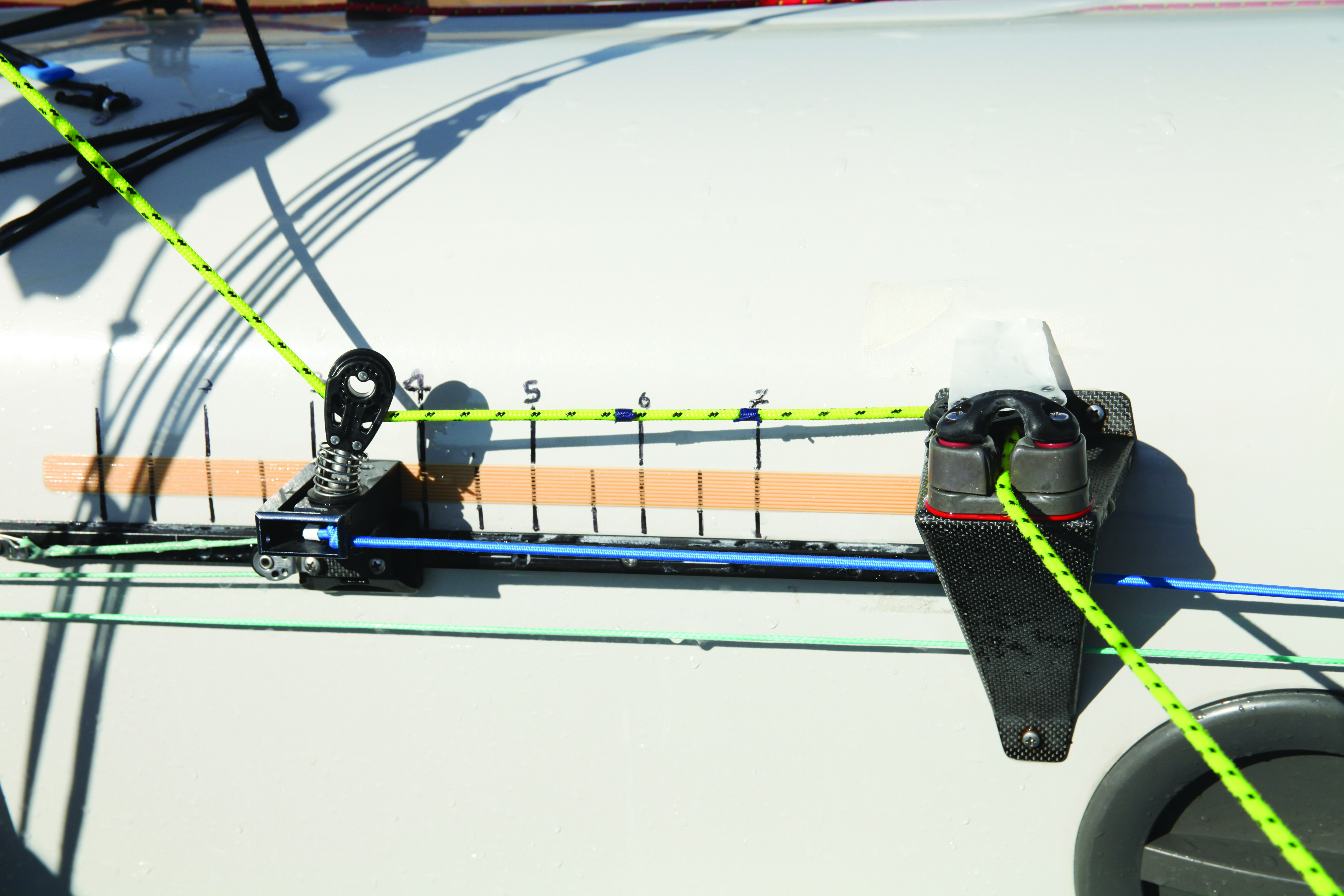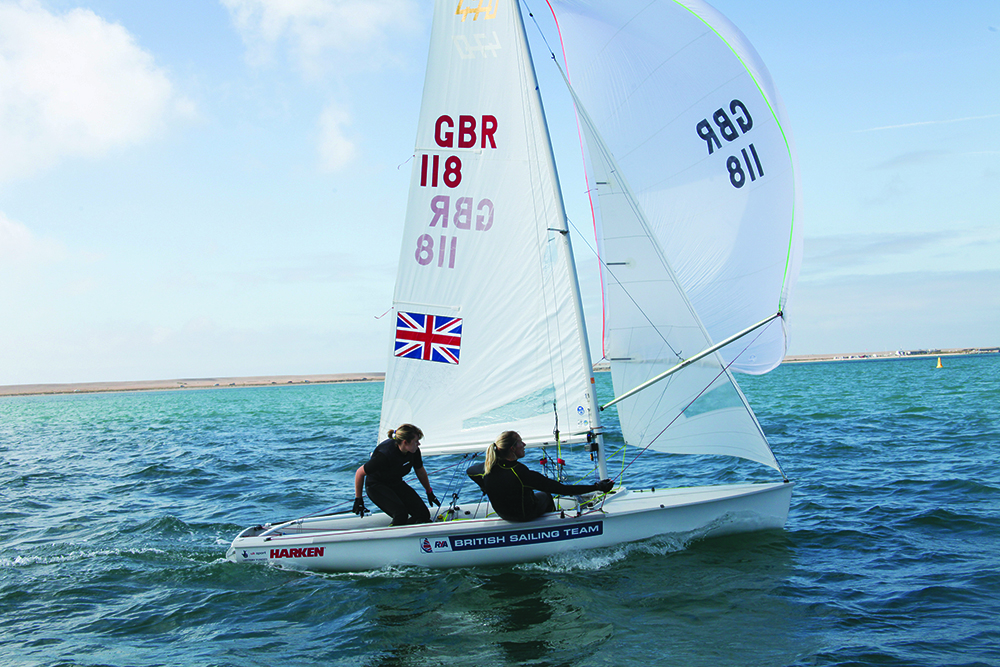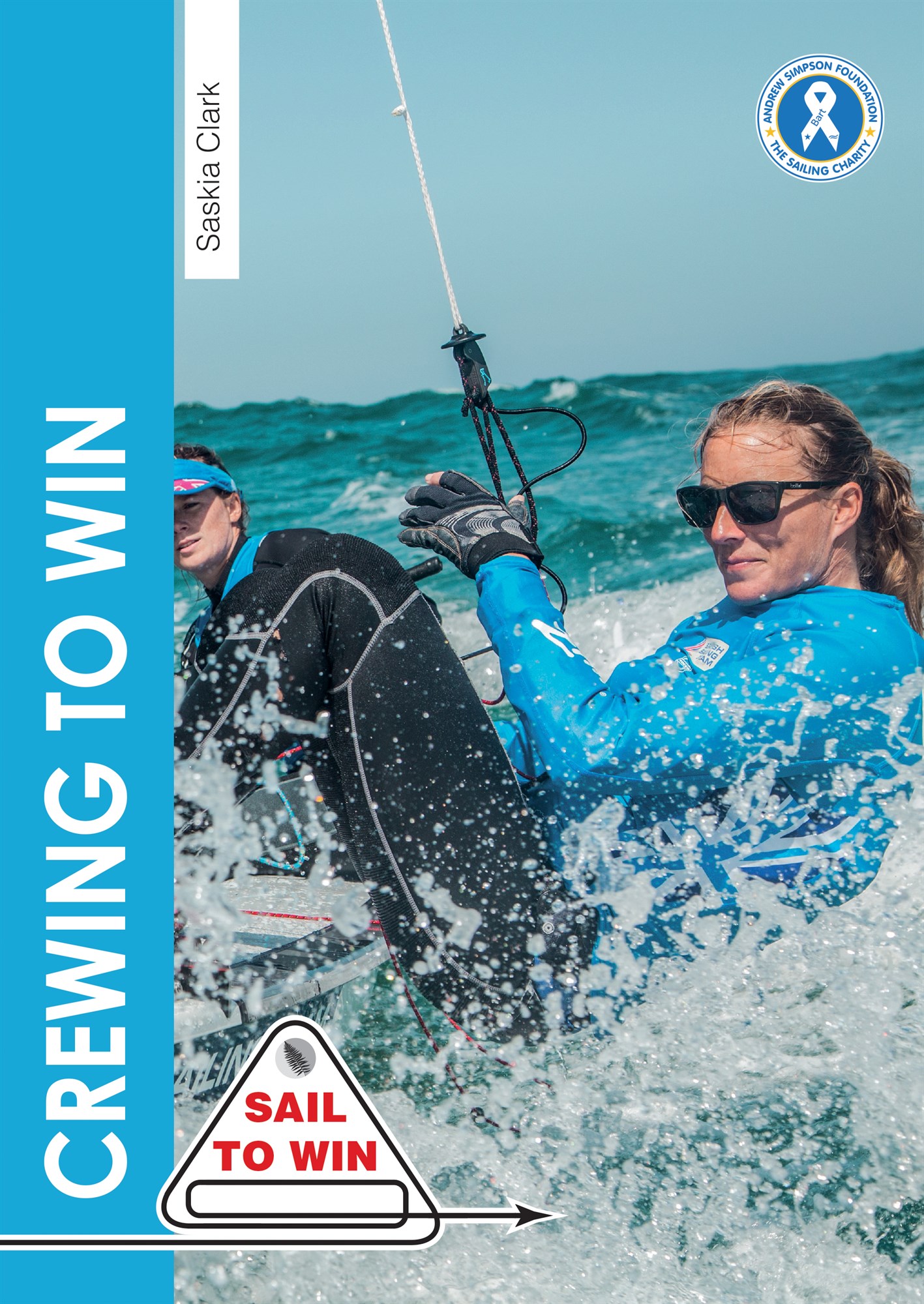PRE-START
Whether you are going out for a championship day or a Wednesday evening club race, it’s always good to turn up in the starting area with a little bit of time to spare. Detailed below is the process I use for a race day at a World Cup event. How much weighting and time you give each element will obviously depend on how much time you have and how important the event is to your team.
Boat Set-Up
As you arrive at the race area go straight into an upwind tuning session to identify if you are on the right mast rake settings. Remember there might still be significant time to the start and the conditions have a long time to change, especially if you are in a sea breeze venue. So, if you feel like you are near a transition zone, don’t waste too much time making a decision at this point.
Jib Set-Up
Give yourselves a bit of time just to settle into the conditions. If you are a trapeze crew, get your trapeze height in the right range. Get your jib leech in the right place. Think about the strength of the wind and the sea state and what this means in relation to how tight you want your jib leech, and how much jibsheet or jib car you might need to be moving in the varying wind or wave conditions.

Adjust your jib settings to the conditions
Technique Practice
Think about the wind conditions you are in and, from a boatspeed perspective, where the gains will come from:
- Is it a light / medium wind, flat water day, where holding a lane is going to be vital, so a high emphasis is on accuracy of sheet position and crew weight?
- Is the wind strength in that transition phase from displacement to planing (obviously if you are in a planing boat!) so getting the crew weight back and popping the jibsheet an inch at the crucial time will get you pushing forward fast?
- Is it top end wind conditions, where the losses will come from screwing up into the wind and flapping sideways until you can get control back? So, practise your pre-emptive strategy of a big jib ease and a step forward to maximum leverage position.
The discussion around these things will inform how you set up your boat and whether you need to lose or find power. It will get your team on the same wavelength, talking the same language with the same objective.
As well as the upwind set-up, get the range of the shifts (on your compass if you use one) and a sense of how quickly the wind is moving through the shift range. Can you identify any pattern to the shifts? Is it a 10-degree range over 10 minutes, random 20-degree shifts moving very fast? Are all the gusts shifting one way? Or is it totally random? (As Nick Craig emphasises in Tactics to Win, knowing it is random is useful input and far better than convincing yourself there is a pattern when there isn’t!)
When you are happy with your upwind set-up, if you have a symmetric spinnaker, hoist onto what would be an appropriate top reach angle, so you know where to pull your twinners or guy back to (depending on what system you are using).

Check your reaching angles and settings
After a short reach, bear away on to a run. It’s really easy to waste this bit of the downwind, discussing what you have learnt on the upwind and potential race strategy, but use the downwind for technique. Find the right rhythm between you both on the weight distribution for steering the boat, the right tempo on the rocking and pump, and the right work rate. Bear in mind that the water might be extra flat right now as boats and RIBs haven’t sailed through it and chopped it up. Do a few gybes to assess the amount of roll needed and speed of flatten on the exit.
Strategy Discussion
When you are happy with your downwind speed, start talking about your first upwind strategy with your helm. From what you learnt on the upwind tuning and the speed and frequency of the shifts, what will be important in the race? You could easily have a list of questions written down in the boat to promote the conversation:
- Will lanes, shifts, or pressure be the most important factor?
- Is the shift range so small that it makes it a boatspeed race?
- What is the tide doing right now and what is it due to do over the duration of the race? How will that affect your strategy?
- Is any land mass affecting the race course?
- Is the wind forecast predicting anything that could have an effect?
- Are the clouds giving us any information right now?
It’s important that this discussion has actionable output that leads to decisions on strategy like where you want to start and if you think there is a favoured side of the course, rather than just a load of answers that lead to no strategic decisions.
For example, if you’ve discussed that it’s a fastmoving shift range coming down with pressure, what actions does that mean you will take for the start and the upwind? Will you give away line bias to be nearest the first bit of pressure and will you make a late call on that in the starting sequence? Regardless of bias, would you start on port and duck the fleet if it immediately put you on the right shift and pressure?
If there is any tide, mentally go around the whole course and verbally say what it will mean. For example, if the tide is going left to right as you look upwind, the implications might be:
- It will make it hard to start at the committee boat end.
- The pin end will open up and could have space late on.
- There will be a long starboard tack upwind.
- It will be easy to over lay on starboard layline upwind, so there is the potential to tack in late.
- There will be a long time on starboard downwind.
- You will be pushed onto leeward marks from the left.
- There will be a long top reach against the tide, and you could get pushed high / low depending on the exact angle.
Starting Drills
An output of your strategy discussion should be a decision on where you want to start, and it should be a start that complements your upwind strategy, not definitely one that would make it impossible.
If you’ve decided that holding out to the left of the course is vital, then a pin end start is the most preferable option. However, the pin end can often be a highly congested area, so you might consider starting in space further up the line, lessening the risk of starting in a congested area, executing a reasonable start to hold your lane and not get immediately bounced to the right. There will, of course, be races when the outcome is decided at the start and you have to be the boat that executes the start in a congested area in order to win, but this probably happens on fewer occasions than people think, and, in a series of races, it becomes less vital to be that boat.
Whatever your starting decision, it is worth doing a few warm up starts, especially when there is tide. Evaluate where you want to start, figure out where the layline is for that position, how much drift there is when you are downspeed and flapping, what the slowest speed is that you need to be moving for the amount of wind to keep grip on the foils; and do a few practice accelerations so you know how long it takes you to get from stationary to full speed.

1. Sail slowly and understand how much sideways drift you are experiencing

2. Understand how far you have to bear away to get the boat powered up

3. Lean the boat to leeward to help steer the boat up

4. Pull the boat flat and power over the line at full speed
When the start line is set, start getting your transits, but be aware that they can still move the line up to the preparatory (4 minute) signal. It’s always tempting to not get enough transits far enough back, but 5 boat-lengths back at the starboard end is only 1 ¼ boat lengths when you are three quarters of the way down the line, which you definitely need. Beware if it is light winds or there is tide, you may not have enough time to get to the other end of the line to get transits and back to where you want to start in the time available – so prioritise what you need to get done.
Check the course board after the preparatory signal. If they have posted a windward mark bearing, pop the boat head to wind and understand if the beat has a long tack.
Get the line bias. There are a few ways to do line bias. My preferred way is to take a bearing down the line and add 90 degrees if you are at the boat end or subtract 90 degrees if you took it from the pin end. That number is what the line is set square to so, whenever you pop head to wind during the sequence to get the wind direction, you can quickly decide how much bias there is either way.
In the pre-start routine, keep an eye on what the wind is doing: is it trending one way, has the condition totally changed since you did your prestart tune up and do you need to re-check that you are set up right? Does everything you discussed regarding strategy still hold true, are there any new elements to consider? Sometimes your previous strategy discussion will become totally irrelevant and you quickly have to reassess and make fresh decisions based on the new conditions. Most of the time it might just be a subtle adjustment to what you have already discussed or a reaffirming that your strategy is right. If there is tide, make sure that you never get too far away from where you need to be.
Throughout the pre-start keep popping the boat head to wind to check the wind direction and what this means for the line bias. Does it change what you have decided to do?
This pre-start routine will take up most of your preparatory time. Be really aware of the time you have left and be prepared to drop some of that routine if you need to save time.
All of this might feel like a lot to take on board, so if you are new to sailing and just developing your role: make your life easy. Write the compass number range on the deck so you remember it. If you keep forgetting stuff, write yourself reminders.
If you are transitioning from helming to crewing, it’s important to commit to your new roles as a crew and not repeat jobs that you might previously had as a helm. Between you and your helm you need to assign roles based on your strengths and develop areas that you are weak on.
Throughout the pre-start it’s the crew’s job to call the time: every 10 seconds or so, in the 5- to 3-minute phase. As you get near 2 minutes to go you need to start thinking about your final approach. Now is the time have good communication about bunches of boats and where the space and lanes are if you decide to dip around behind them. At 2 minutes you should have time to establish yourself in a lane on the other side of them, but in the final 1 ½ minutes it could be too late.
Crewing to Win is written gold and silver medallist Saskia Clark. It contains invaluable advice for anyone who sails a two-person boat, not just crews!
To get more of Saskia Clark’s top tips, Crewing to Win can be bought here

© Not to be reproduced without written permission from Fernhurst Books Limited.